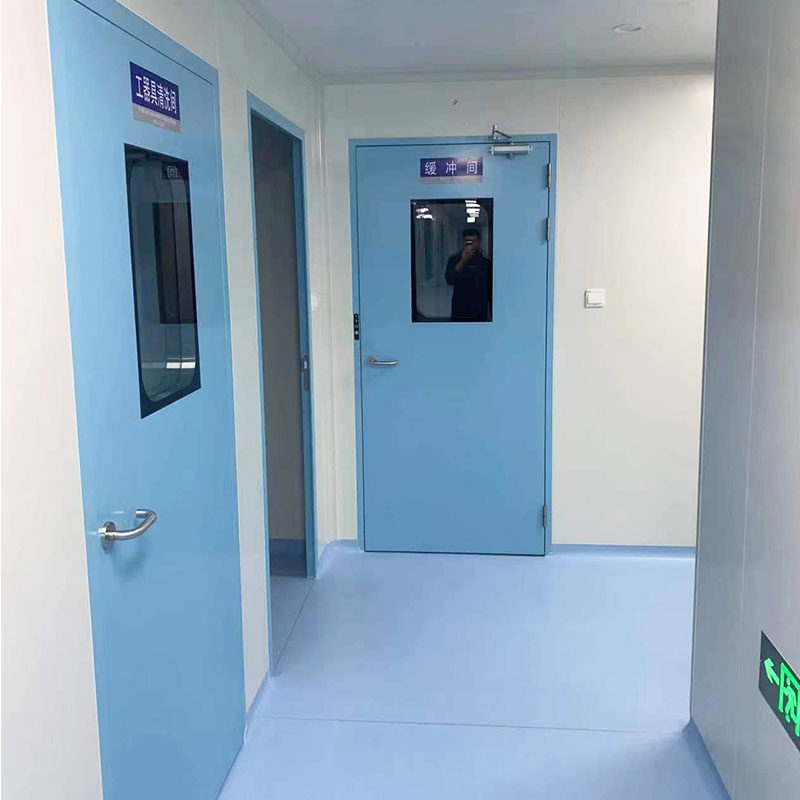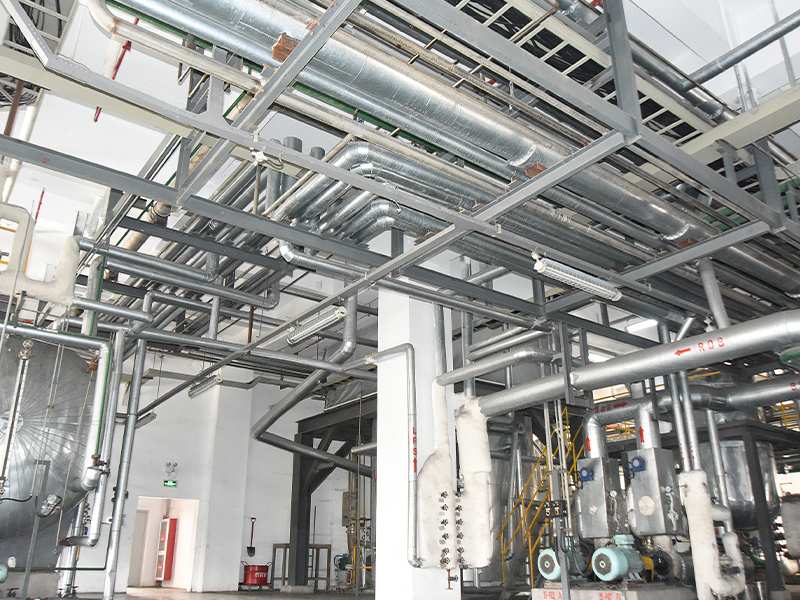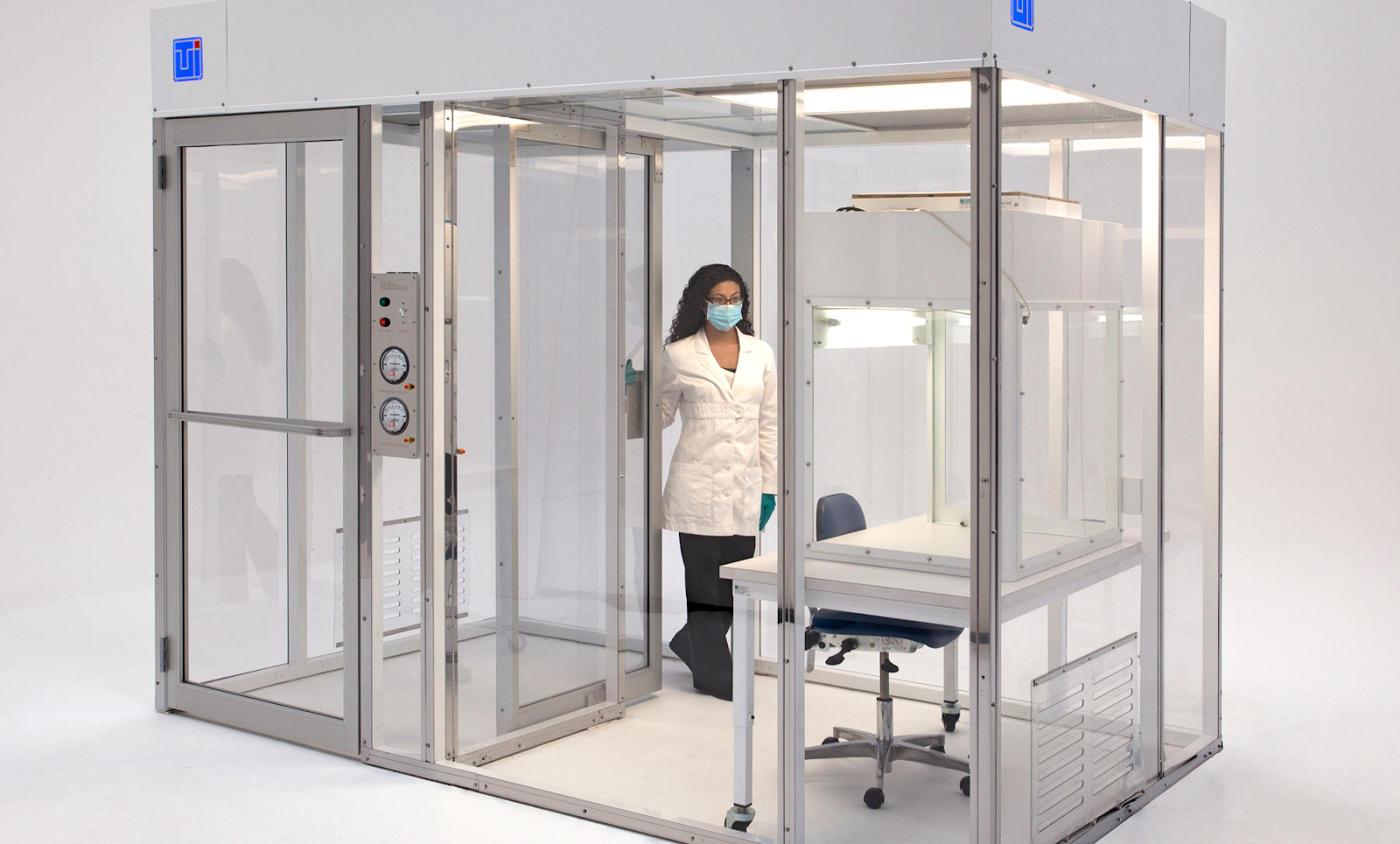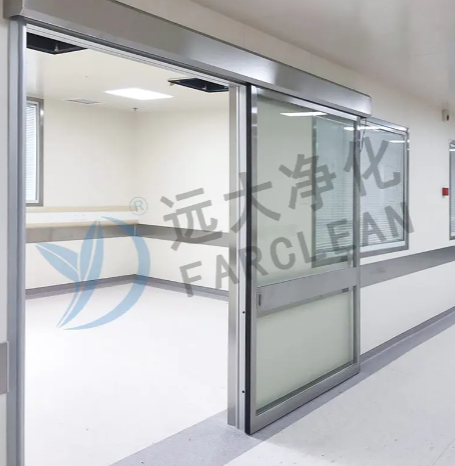To ensure that cleanroom doors continuously maintain their cleanliness, regular cleaning and disinfection are essential. The following are detailed steps and precautions for the regular cleaning and disinfection of cleanroom doors:
Cleaning Steps
Preparation Work:
Ensure that the cleaning tools (such as soft cloths, sponges, glass scrapers, etc.) are clean and suitable for the material of the cleanroom door.
Prepare appropriate cleaning agents, such as neutral detergents or specialized cleaners, and avoid using solvents with corrosive ingredients.
Removing Dust and Stains:
Gently remove dust and debris from the door surface using a dry soft cloth or a vacuum cleaner.
For stubborn stains, gently wipe them with water or a neutral detergent, avoiding the use of coarse cloths or scraping tools to prevent surface scratches.
Glass Cleaning:
If the cleanroom door has glass sections, special attention is required for cleaning.
First, use clean water to remove stains from the glass surface.
For stains that are difficult to remove, mix dish soap with water, then gently wipe with a damp cloth or sponge, followed by a rinse with clean water.
Use a glass scraper to remove excess water, ensuring that the glass surface is dry and transparent.
Frame and Groove Cleaning:
Dust and dirt in the frame and grooves also need to be removed.
Use a soft brush or vacuum cleaner to clean the dust first, then wipe clean with a damp cloth.
For difficult-to-clean corners, use a multi-purpose groove cleaning brush for deep cleaning.
Post-Cleaning Inspection:
After cleaning, carefully inspect the door surface and glass to ensure they are clean and transparent, with no remaining stains or water marks.
Disinfection Steps
Choosing the Right Disinfectant:
Select an appropriate disinfectant based on the specific needs and regulations of the cleanroom.
Ensure that the disinfectant is non-corrosive to the door material and meets the hygiene standards of the cleanroom.
Disinfection Procedure:
Dilute the disinfectant according to the instructions, then use a soft cloth or sponge to evenly apply it on the cleanroom door surface.
Ensure the disinfectant contacts the door surface for sufficient time to achieve effective disinfection, with the specific time depending on the type and concentration of the disinfectant.
Rinsing and Drying:
After disinfection, rinse the door surface with clean water to ensure that all the disinfectant is thoroughly washed off.
Use a clean soft cloth or sponge to dry the door surface and glass, ensuring they are dry and transparent.

Precautions
Avoid Over-Cleaning:
Excessive cleaning may damage the surface of the cleanroom door or accelerate aging. Therefore, control the intensity and frequency during the cleaning process.
Attention to Disinfectant Selection and Use:
The choice of disinfectant should comply with the relevant regulations and standards of the cleanroom, and avoid using disinfectants that are corrosive to the door material.
Follow the usage methods and precautions on the disinfectant's instructions to ensure safety and effectiveness.
Regular Inspection and Maintenance:
Regularly inspect the cleanroom door to promptly identify and address issues such as wear, scratches, or stains on the door surface.
For hardware components (such as door handles, locks, hinges, etc.), regular cleaning and maintenance are required to ensure their normal operation and prolong their service life.
By following the above steps and precautions, effective cleaning and disinfection of the cleanroom door can be ensured, maintaining its cleanliness and sterile condition, and meeting the requirements for cleanroom use.

 English
English русский
русский Español
Español





